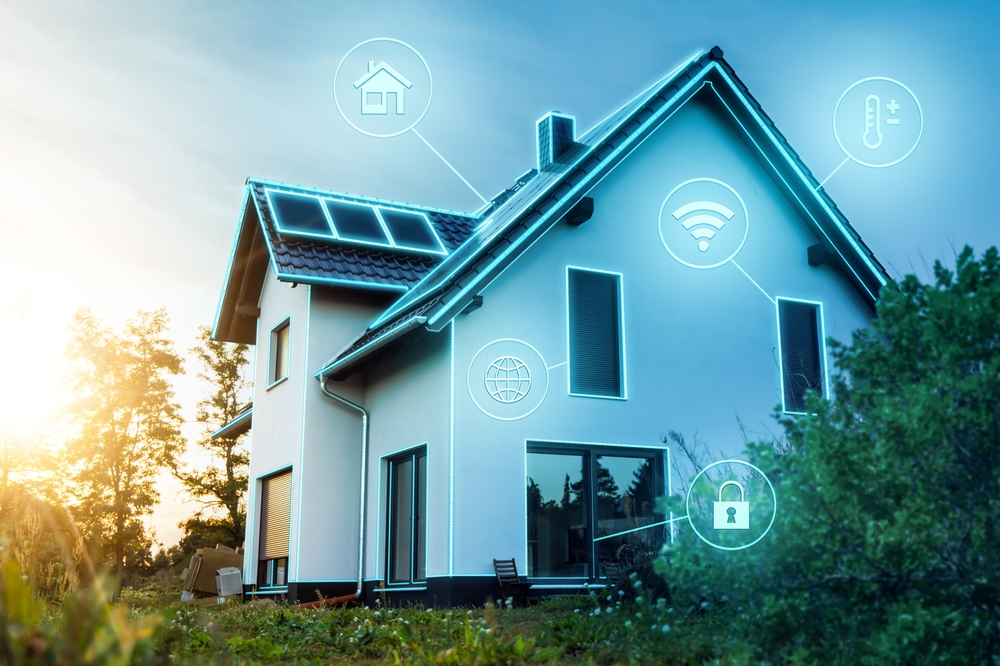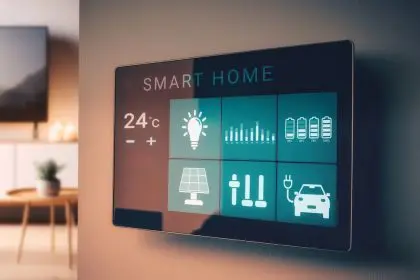Smart homes are evolving far beyond connected devices and voice commands that require your constant attention and input. Welcome to the age of ambient computing, where technology completely fades into the background and your home quietly responds to your needs without any direct interaction from you.
This isn’t just about having more gadgets or better apps, it’s about creating living spaces that understand you so well they anticipate your preferences and automatically adjust everything from temperature to lighting to security based on your behavior patterns and environmental conditions.
The shift represents a fundamental change in how we interact with technology, moving from reactive systems that wait for commands to proactive environments that seamlessly support your daily life without demanding your attention or conscious input.
Invisible computing dissolves the boundary between you and technology
Ambient computing is the concept of computational power that operates completely in the background, blending seamlessly into your environment until the technology itself becomes essentially invisible. Rather than relying on screens, buttons, or voice commands, ambient systems use an array of sensors, artificial intelligence, and cloud connectivity to understand and anticipate your actions.
In a smart home powered by ambient computing, your thermostat automatically adjusts when you leave a room, your lights gradually dim as the sun sets outside, and your refrigerator reorders groceries when supplies run low, all without you needing to lift a finger or issue a single command.
The technology works by creating a comprehensive understanding of your living patterns, preferences, and routines through continuous monitoring of environmental conditions, occupancy patterns, and behavioral cues that would be impossible for humans to track manually.
This level of automation goes far beyond simple scheduling or preset routines, creating dynamic responses that adapt to changing conditions and evolving preferences in real-time.
Your home transforms from reactive to predictive
Traditional smart home setups often require voice commands, smartphone apps, or manual control to operate devices and systems. Ambient computing eliminates these interaction barriers by making all technology responses invisible and completely automatic based on environmental awareness.
Context awareness allows devices to detect motion, temperature changes, voice patterns, and behavioral routines to build comprehensive understanding of your living environment. This awareness extends beyond simple presence detection to understanding what you’re doing, where you’re going, and what you might need next.
Predictive responses use artificial intelligence to anticipate your needs based on established routines, seasonal patterns, and even subtle behavioral changes that indicate shifting preferences or requirements. The system learns continuously, becoming more accurate and helpful over time.
Multi-device orchestration ensures that lights, appliances, speakers, security systems, and climate control work together seamlessly without requiring direct instruction or coordination from you. The entire home becomes a single, integrated system rather than a collection of separate smart devices.
Real-world applications are already changing daily life
Voice assistants paired with advanced sensor networks can turn off lights automatically as you exit rooms, adjust music volume based on ambient noise levels, and even start your coffee maker when they detect you’re waking up based on movement patterns and time of day.
Smart thermostats have evolved far beyond simple scheduling to learn your daily routines, occupancy patterns, and even seasonal preferences, automatically maintaining optimal comfort while minimizing energy consumption without any manual programming required.
Health tracking integration connects smart beds, wearable devices, and environmental sensors to detect sleep quality and automatically adjust lighting, temperature, and even air purification to improve your rest and recovery without conscious intervention.
Security systems powered by ambient intelligence can distinguish between normal household activity and unusual patterns, sending alerts only when genuinely necessary rather than triggering false alarms from routine activities.
Advanced technologies converge to create seamless experiences
The Internet of Things provides the foundational connectivity that links every device throughout your home into a unified network capable of sharing information and coordinating responses across different systems and manufacturers.
Machine learning algorithms continuously analyze your habits, preferences, and routines to predict what you need before you realize you need it, creating personalized automation that becomes more accurate and helpful with every interaction.
Edge computing processes data locally within your home rather than sending everything to remote servers, ensuring faster response times, better privacy protection, and continued functionality even when internet connectivity is disrupted.
Natural language processing enables seamless communication through voice when needed, but more importantly, it allows systems to understand context and intent from casual speech patterns rather than requiring specific commands or wake words.
Privacy and control challenges require careful navigation
Constant data collection necessary for ambient computing raises significant privacy concerns that require robust security measures and transparent user control over what information is gathered, stored, and used by these intelligent systems.
The always-listening, always-watching nature of ambient computing means that your most private moments and personal information are potentially being monitored and analyzed, creating legitimate concerns about data security and potential misuse.
Device compatibility across different manufacturers remains a significant challenge, with many smart home products still operating in isolated ecosystems that prevent the seamless integration necessary for true ambient computing experiences.
Overautomation can create situations where users feel disconnected from their own living spaces or frustrated when systems act unpredictably or make decisions that don’t align with immediate preferences or changing circumstances.
Manufacturers are addressing integration and transparency issues
Open standards development is creating better compatibility between devices from different manufacturers, allowing consumers to choose products based on features and quality rather than ecosystem lock-in requirements.
More intuitive user interfaces are being developed to help people understand what their ambient systems are doing and why, maintaining transparency and control even when most operations happen automatically in the background.
Privacy-by-design approaches are being implemented to ensure that user data remains secure and that individuals maintain control over their personal information even as systems become more intelligent and automated.
Customization options allow users to set boundaries and preferences for automated behaviors, ensuring that ambient computing enhances rather than replaces human agency and personal choice in their own homes.
The future promises truly intelligent living environments
Ambient computing represents more than just a technological trend, it’s a complete reimagining of how humans interact with their living spaces and the technology that supports daily life. The goal is creating environments that understand and support you rather than demanding your attention.
Future developments may include homes that detect your mood through biometric monitoring and automatically adjust lighting, music, and climate to support your emotional state, or systems that anticipate health needs and modify environments to promote wellness and recovery.
Advanced ambient systems might recognize when you’re trying to focus and automatically minimize distractions, or detect when you’re entertaining guests and seamlessly adjust multiple systems to create appropriate ambiance without any conscious input required.
As machine learning and sensor technology continue advancing, ambient computing will become increasingly sophisticated at understanding complex human needs and preferences, creating living spaces that feel truly responsive and supportive.
The ultimate vision is technology that disappears completely, leaving you with living spaces that feel naturally responsive and supportive while the complex systems that make this possible remain completely invisible and unobtrusive.
















